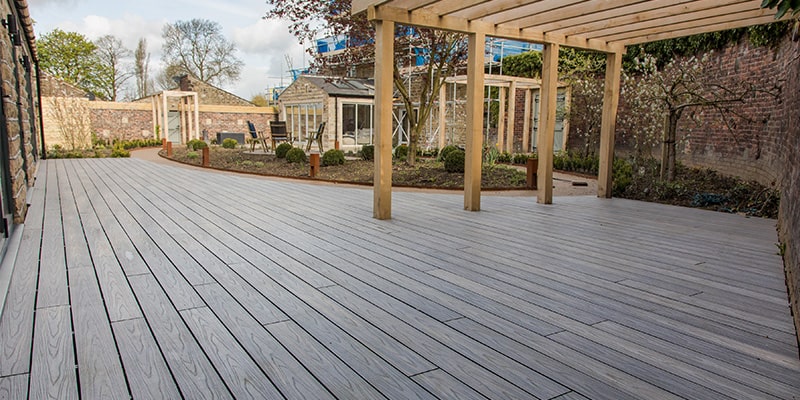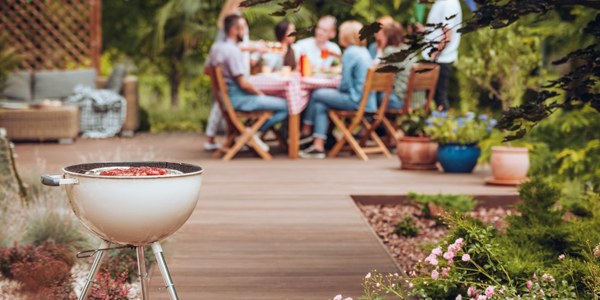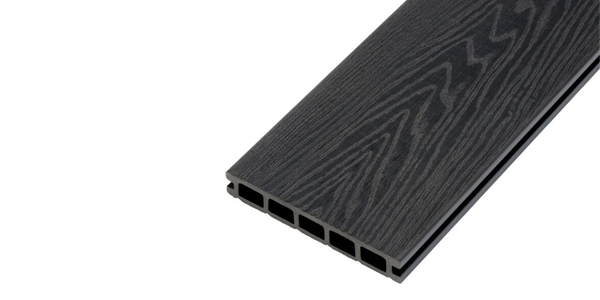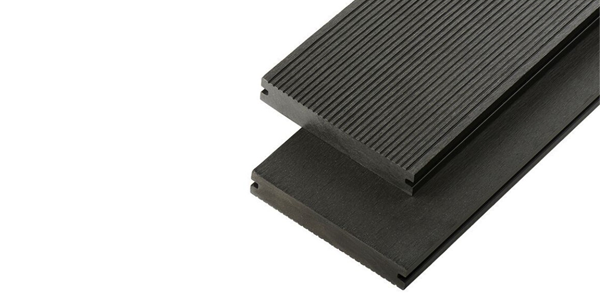Composite Decking: Hollow vs. Solid

Are you about to begin revitalising your garden but aren’t sure which is the most cost effective choice of decking? Are you looking to add an area to your pub garden for customers to congregate but aren't sure which type of decking offers the greatest level of durability?
Whatever your project, sometimes it’s difficult to know which type of decking to use. After all, you must not only choose from a variety of materials but also pick from a range of styles.
Below we provide a rundown of the pros and cons of two popular types of decking - wood and composite. We then go on to highlight the advantages and disadvantages of both hollow and solid composite decking.
Wood vs Composite Decking
Wooden decking has traditionally been the go-to material for decking with many people loving the appearance that traditional timber decking offers.
However, you must consider how willing you are to put in the time necessary to maintain this appearance for years.
This is as over time wood can lose its colour, simply from being bleached by the sun. It will also need regular protection from the rain and other elements.
In general, wooden decking needs a good brush down monthly and oiling at least once a year to prevent it from warping or rotting.
For a maintenance free option, more and more people have been turning to composite decking. Unlike wooden decking, composite alternatives are often made of recycled plastic and wood fibres.

The Benefits of Composite Decking
Composite decking has improved dramatically over recent years and can now looks remarkably like wooden decking. You can even buy boards which have a grain look on one side but then can be flipped to show a more contemporary pattern on the other side. So, if you want a different look a year or two after installing it you can simply flip them over!
You needn't worry about your composite boards getting slippy when it’s wet either. This is as it neither absorbs water or builds up a silky coating like wooden decking. Plus, composite decking typically feature a slip resistant pattern.
This resistance to water and slipping provides a wealth of other benefits too. Especially for bars and restaurants, where spillages often occur. Unlike wooden decking, you can simply mop up any spillages on composite decking without the worry of it staining.
Lastly, composite boards are as easy (if not easier) to install as wooden decking. This is as you can cut the sheets in the same was as wood and you require no specialist tools - it really couldn't be easier!
Hollow vs. Solid Composite Decking
When buying composite decking you will have a choice of either hollow or solid boards. It can often be difficult to choose the right one for you, so here is a comparison of both.
Hollow

The most obvious advantage of the hollow boards is that they weigh less. This is due to them featuring lightweight honeycombed centre. This makes them ideal for smaller projects where there are fewer hands to help.
Despite them being hollow, these boards are still incredibly strong and are actually less likely to warp than the solid boards in some circumstances. However, due to their hollow centre they can hold moisture and water internally which can be difficult to remove.
This can, with time, begin to damage the boards. However, using purposely designed end caps can prevent this issue and protect the boards from water ingress (and keep the bugs out).
A final advantage of the hollow boards is that they respond less to the elements, whereas solid boards can respond to extreme heat and rain fluctuations by expanding or contracting, and sometimes even warping.
One significant disadvantage of hollow decking is that it resembles real wood less than its solid counterparts. This is as it typically contains more uniform grains.
As you can see hollow composite decking offers a wealth of benefits. This includes being lightweight, easier to install and resistant to expansion. In many cases hollow boards are also cheaper than solid.
Solid

The primary advantage of solid composite decking is its strength. This is as it is free of the honeycomb centres that are apparent in hollow boards, virtually eliminating any flex.
This makes hollow boards more suitable if the decking you’re building will get heavy foot fall, such as in a bar or pub garden. Or if you’re planning to have heavier objects such as hot tubs or grills on your decking then solid boards are likely a the best choice for you.
One thing to consider is the added weight of solid composite decking. This can make it harder to carry and handle during construction. Although, they are easier to screw into and offer the added benefit of better sound absorption than the hollow alternative.
A final but important advantage of solid boards is that they resembles real wood more than its hollow counterparts. This is as it features more grain variations, providing a more realistic appearance.
In Conclusion
Hollow composite decking are often cheaper and, because they’re lighter, they can be easier to install. However, they typically have a more uniform look than solid boards and therefore appear less realistic. Although, this will not be noticed by the untrained eye.
Solid composite decking does not only look more realistic, but also offers additional strength. Whilst this will make installation somewhat more difficult, it makes them ideal for use in high-footfall areas such as bars and pubs.
View our full range of composite decking.